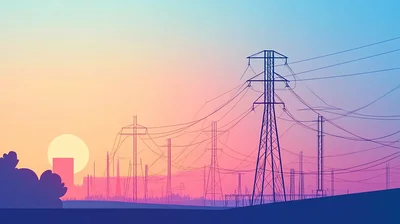As residents of Knox County await the Ohio Power Siting Board’s (OPSB) decision on Frasier Solar’s application for a facility near Mt. Vernon, concerns remain about the effects of solar generation on grid reliability and consumer costs.
Ohio is part of the Pennsylvania-New Jersey-Maryland Interconnection (PJM), which manages the electric grid in all or parts of 13 states. Earlier this year, PJM projected that the demand for electricity would increase on average by 2.4% per year over the next ten years. The growing demand is putting pressure on the grid to maintain sufficient generation, especially in light of the growth of solar generation.
A reassessment of generation sources by PJM determined a reduced capacity from solar, resulting in “further tightening the supply-demand balance.” The reduction in solar capacity, and batteries as well, is a result of their “past performance during winter peak demand periods.”
“As energy demands grow, it creates a problem for PJM,” added CenterSquare. “PJM expects demand to increase significantly by 2040, but the power supply is becoming more intermittent as solar projects dominate the queue to get plugged into the grid.”
Intermittent generation sources are those that cannot be counted on to generate electricity on demand. In the case of solar and wind, both are dependent on the weather for the ability to maintain generation. Additionally, solar cannot generate electricity in the evening and night when winter conditions may be extreme.
The increasing imbalance between supply and demand may also increase the cost of electricity to Ohioans and other PJM consumers. Energy Ventures Analysis notes the possibility of future price increases “with capacity prices skyrocketing to $269.92 per megawatt-day for the [PJM] footprint—a nearly tenfold increase from the previous auction.” The impact on consumers across PJM will vary based on the regulatory structure of each state.
Across PJM, 97% of proposed generation projects are “variable energy resources such as on and offshore wind, solar, and short-term battery storage projects.” The intermittent nature of all these projects add strain on the grid, particularly during extreme weather events where they often operate well below expected capacity.
The problems of the increased presence of solar across PJM is also an issue in Ohio.
Solar generation in Ohio is growing rapidly. According to the Solar Energy Industries Association, the amount of solar generation installed in Ohio has more than doubled over the last two years to 3.22 megawatts, representing an investment of more than $4.2 billion. Ohio ranks 14th in the nation for installed solar generation, up from 32nd in 2022.
Ohioans concerned about the growth of solar may find some relief in the near future. Bricker Graydon notes a number of recent changes that might lead to a reduced growth of solar, such as fewer solar applications submitted to OPSB, more counties passing solar bans—including those without proposed projects, and new rules for solar siting adopted by the OPSB. However, this does not lessen the potential detrimental effects of the solar plants already or soon to be online.







